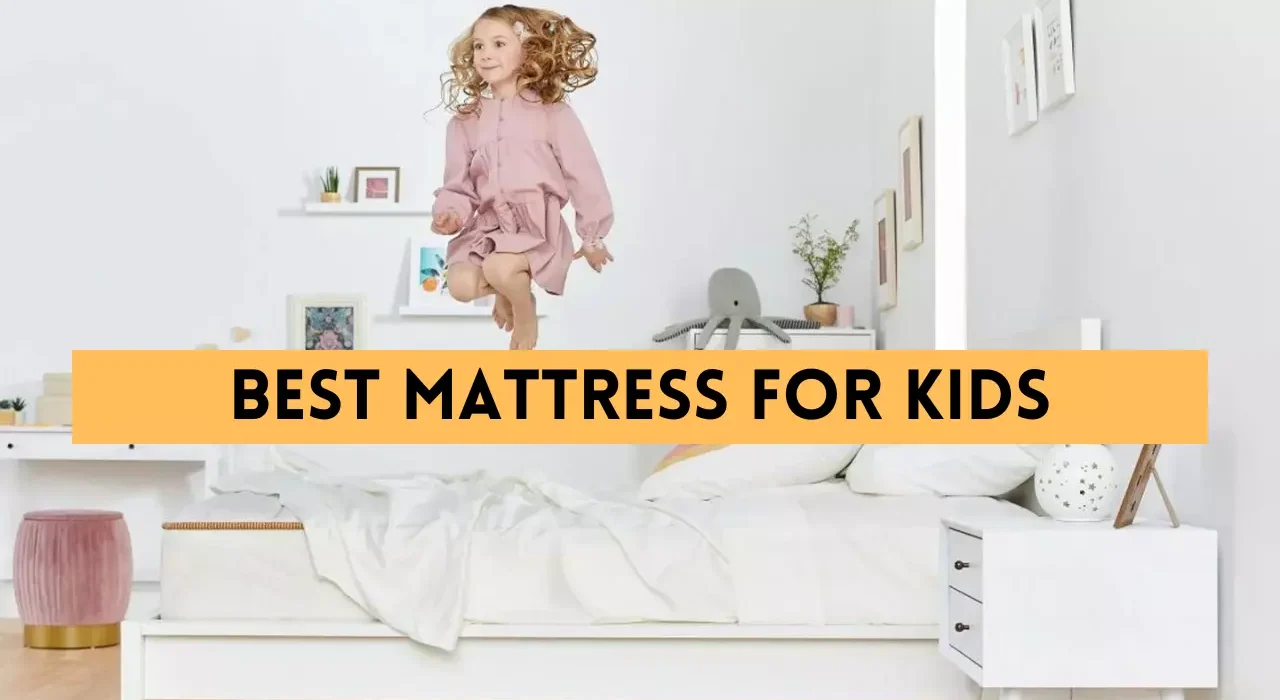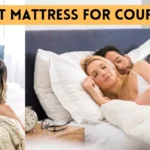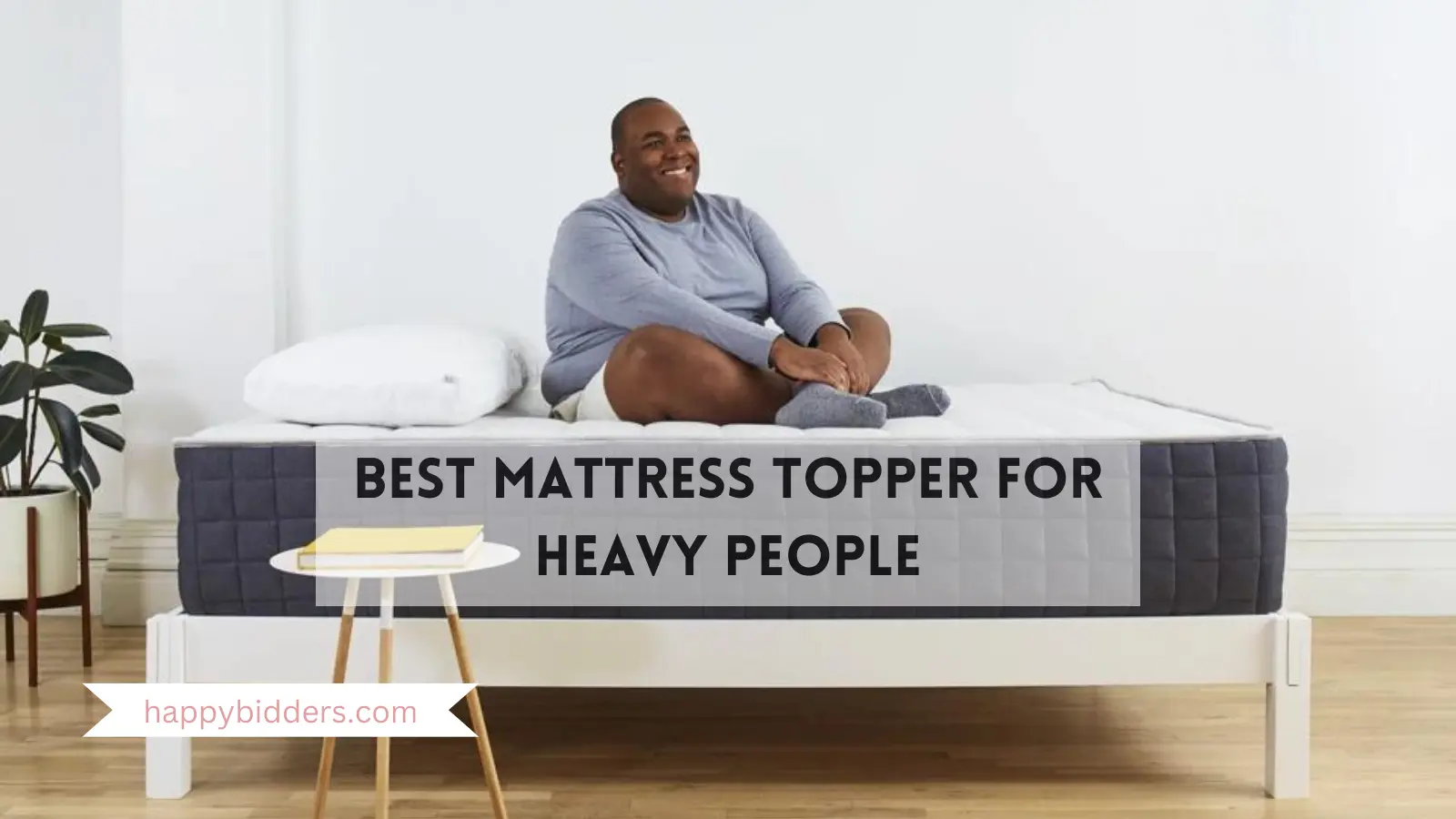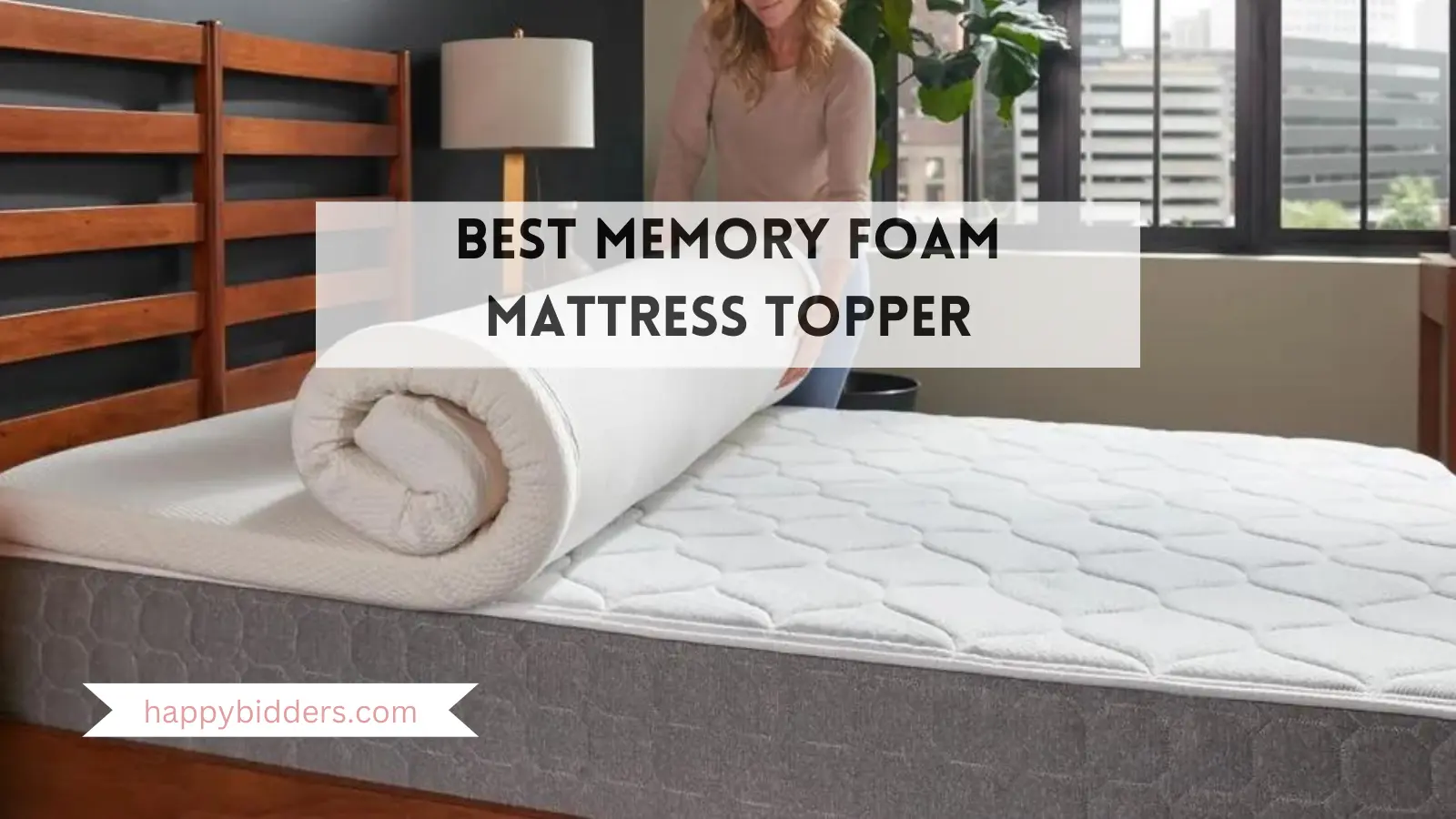Sleep plays a crucial role in keeping your child healthy. From the time they’re old enough to sleep by themselves, kids need to get the right amount of sleep for their age group to make sure their growth and development are on the right track. If they don’t consistently get deep, restful, and uninterrupted sleep, they could develop sleep disorders, which could then lead to behavioral problems and even cognitive issues.
This is why it’s very important for your child to sleep on a comfortable and supportive mattress. The Best mattress for kids will be a long-term investment that allows him or her to get a good night’s sleep, regardless of age and daytime habits.
Is There a Difference Between Kids vs. Adult Mattresses?
Although some mattresses are equally suitable for both adults and children, other models are specifically designed for kids. Mattresses in the latter group usually have thinner profiles and lighter builds than their adult-friendly counterparts. Kids mattresses may include additional features geared toward children, such as waterproof membranes that prevent liquid damage from bedwetting.
Size availability is another area where kids’ and adult mattresses often differ. Most models designed for children are sold in smaller sizes intended for one sleeper, such as twin, twin XL, or full. Adult mattresses expand on size selection with queen, king, California king, and other larger sizes to accommodate couples and co-sleepers.
Lastly, the average kid’s mattress costs between $250 and $600. Adult mattresses are typically more expensive – about $1,000 to $1,200 in a queen size. Parents should keep in mind that their kiddo will likely outgrow their first mattress. Rather than investing in an expensive model, they may want to purchase a cheaper mattress with the expectation it will need to be replaced in three or four years, if not earlier.
Which Types of Mattresses Are Best for Kids?
Children aren’t a monolithic group. When it comes to sleep needs, the only things they have in common are the amount of sleep they need every night (as dictated by their age group) and the fact that they’re still growing. In other words, kids are just as varied as adults in the type of mattresses they prefer, and what works for one child may not work for another.
That said, some mattresses are more suitable than others for growing pains, lighter weights, and ever-shifting sleep habits specific to children. For example, foam mattresses respond to the amount of weight and pressure applied to them, which means they’ll give your child the support proportionate to their needs as he or she grows bigger. In this section, we’ll break down the pros and cons of each mattress material as they apply to the unique needs of a child.
Before buying a kid’s mattress, you should become familiar with the unique characteristics, pros, and cons of each general mattress type.
Memory foam is a material engineered to conform closely and evenly to the body. The foam becomes softer when exposed to body heat, allowing it to mold to a sleeper’s unique contours, then hardens and returns to its original shape when the heat is removed. This results in a signature “body-hugging” feel that some people enjoy.
Average Price (Queen):
$800 – $1,200
Pros for Kids:
- How closely the memory foam contours depends on the sleeper’s body weight, so a foam mattress should provide proportional support for a child as they grow.
- Foam mattresses are completely silent and won’t produce the disruptive squeaks or creaks associated with coil mattresses, ensuring your child won’t wake up due to noise.
Cons for Children:
- Memory foam has a tendency to absorb and trap body heat, so kids might feel uncomfortably warm sleeping on a foam mattress.
- These mattresses lack durable support cores, so sagging is likely to occur over time – potentially after only a few years of use.
- Lack of support also means less reinforcement along the perimeter. Children who sleep near the edges of their bed may not feel secure on a foam mattress.
Latex is a material derived from a sap-like extract of rubber trees. Latex mattresses are composed of multiple layers that provide a cushioning, contouring feel without the close body-hug of memory foam. Since latex is also naturally responsive, sleepers will probably notice a light bounce when they get in and out of bed.
Average Price (Queen):
$1,000 – $2,000
Pros for Children:
- Latex is quite durable and doesn’t develop body impressions as quickly as foam. A latex mattress is a solid long-term investment that should last for years – possibly until your child reaches adulthood.
- Compared to foam, latex retains less body heat and generally sleeps cooler. Many latex mattresses feature ventilated layers that promote extra breathability.
- Latex doesn’t sink excessively or hug the body too closely, making it a good sleep surface material for kids who feel claustrophobic on all-foam mattresses but don’t feel comfortable on bouncy innersprings or hybrids.
Cons for Children:
- Prices vary by brand, but latex mattresses are typically more expensive than other mattress types and may not be practical for parents with limited budgets.
- Some children may experience adverse reactions to latex beds, including those with latex allergies or sensitive skin.
Innersprings are the oldest mattress type, and remain one of the most popular among sleepers today. These mattresses usually feature thin foam comfort layers and robust coil systems, creating a supportive and responsive feel.
Average Price (Queen):
$500 – $800
Pros for Children
- Most innersprings feature strong perimeter reinforcement, resulting in more stability and less roll-off for kids who sleep near the edges of their mattress.
- Innersprings carry relatively low price-points and can be a good investment for children who are in the middle of a growth spurt.
- The coil systems of innersprings promote steady air circulation, so most kids don’t sleep too hot on these mattresses.
Cons for Children:
- The coil systems are so robust on some innersprings that they provide too much support – and not enough conforming – making them feel too stiff for some kids.
- The coils tend to produce squeaks and creaks when someone moves on the mattress, and these noises may interrupt your child’s sleep.
Hybrid mattresses combine the coil systems of innersprings with the thick comfort layers of foam and latex mattresses. The result is a good balance of cushioning and support that many people consider the best of both worlds.
Average Price (Queen):
$1,000 – $1,600
Pros for Children:
- Hybrids are available in many variations, allowing shoppers plenty of options in terms of firmness level, thickness, and comfort layer material.
- Most hybrids sleep fairly cool thanks to the consistent airflow of their coil layers. Latex hybrids in particular are known for their temperature control.
- Hybrids are constructed to conform to the body without sacrificing support, so this may be a good option for kids who find foam or latex mattresses too soft and innersprings too firm.
Cons for Children:
- Hybrids can be somewhat expensive compared to other mattress types, so families on a budget may need to find more affordable options.
Important Mattress Features for Kids
Since every child’s needs are different, there isn’t a “one size fits all” mattress for children. Instead, you’ll want to take into account all the possible combinations of materials and features out there, narrowing down your choices according to your child’s specific needs. With so many different models available on the market, this can be a tough decision to make.
When buying a mattress for your child, it’s important to weigh a combination of different factors, just as you would when buying a mattress for yourself. The mattress’ contouring, motion isolation, firmness, temperature regulation, edge support, and more will all depend on what your child personally finds comfortable and supportive enough to give a good night’s sleep.
- Size: The right mattress size for your child largely depends on their age. A twin – the smallest standard mattress size – is best suited to kids 12 and under, especially if they share a room with someone else and you want to conserve floor space. As children undergo growth spurts, the slightly longer twin XL or wider full may be better fits. Either of these sizes could be a good investment for children 13 and older, and could potentially last them well into adulthood.
- Support: When discussing mattresses, support refers to how well a mattress keeps your body on an even plane without sagging or feeling excessively stiff. Young kinds generally don’t need as much support as adults, but this will change as they grow older. The right mattress will offer enough cushioning to keep younger children comfortable while still providing adequate support for older kids and teens, so a mid-range firmness level (medium to medium firm) may be best.
- Contouring: Some mattresses hug the body closely and create a cradling sensation. This is especially true of memory foam beds. Others feel firmer and more supportive. Regardless of how little or how closely a mattress conforms, it should contour evenly to distribute weight and align the spine.
- Firmness: As with contouring, the firmness of your child’s mattress will depend on personal preferences and sleep position. Back and stomach sleepers tend to need firmer mattresses, while side-sleepers tend to prefer softer mattresses. It’s important to keep in mind that the firmness level has nothing to do with the support of a mattress.
- Motion Isolation: When you get on and off of a particularly bouncy mattress, your partner may feel ripples of movement across the surface that can interrupt sleep. Mattresses that provide good motion isolation will absorb this movement and prevent it from transferring to the other side. Motion isolation is an important consideration if you have multiple children sharing a bed – especially if they get up frequently during the night – but this is less of an issue for solo sleepers.
- Temperature Regulation: The temperature regulation of your child’s mattress will depend entirely on how cool or warm he or she tends to sleep overnight. If your child has a tendency to overheat, you may want to consider looking for mattresses with gel-infusion, open-cell foam, or other materials that allow for breathability and cooling.
- Edge Support: The base layers of a mattress determine how supportive it will feel along the perimeter. Beds with minimal support tend to sink more when someone sits on or sleeps near the edges. These mattresses may not be suitable for children who frequently shift sleep positions or roll toward the edges of their mattress. Instead, you should consider a mattress with a strong support core that provides push-back and won’t sink excessively. Innersprings and hybrids usually offer the best edge support.
- Budget and Value: How much you want to pay for your child’s mattress will depend on how long you intend to use it. A mattress that you want to last until adulthood will cost a lot more than one your child will only use for a couple of years.
What Affects a Child’s Sleep?
Buying the right mattress is just one crucial step in establishing healthy sleep habits for children. From their lifestyle to busy daytime schedules to changes in their body and weight, there are plenty of other factors that affect how well your child sleeps. Since everyone is different, the significance of each of these factors will depend on your child’s specific needs.
Physiological changes and shifting sleep needs can play a major role in your child’s sleep. As kids get older, the amount of sleep they’ll need each night will change. Children also become increasingly likely to experience sleep issues as they age. According to the American Academy of Sleep Medicine, sleep recommendations for different age groups include:
Recommended Amount of Sleep:
10-13 hours
Preschoolers might have trouble falling asleep. Other issues may include sleepwalking, nightmares, and bedwetting.
Recommended Amount of Sleep:
9-12 hours
Although they usually need less sleep than younger kids, school-age children still require a consistent bedtime routine to function properly the next day. Homework, extracurricular activities and other aspects of their daily lives can make it difficult to get enough sleep each night.
Recommended Amount of Sleep:
9-12 hours
Teenagers tend to fall asleep later than younger school-age children, so getting enough sleep at night can be a challenge – especially with work, school activities, and social pressures. Adequate sleep is important for development, mental health, and academic performance.
Additional Sleep Tips for Kids
Good sleep hygiene is important for your child’s physical and mental health. Key aspects of sleep hygiene include the following:
Establish a bedtime routine: A consistent bedtime routine helps your child get in the habit of falling asleep at the same time every night. You can incorporate whatever you want into the routine, including having a light, sugar-free snack or a glass of water, brushing your child’s teeth, and reading a book out loud.
Limit sugar and caffeine before bed: Sugar and caffeine are known stimulants, which is why plenty of people drink coffee and energy drinks every morning to boost their energy. This also means ingesting them too close to bed will seriously interfere with your sleep schedule. To stay on the safe side, don’t let your child have caffeine or sugar at least 6 hours before bed.
Build a regular schedule for sleep: Not keeping a consistent sleep schedule can delay the onset of sleep and even lead to the body feeling like it’s in jet lag mode. This is why it’s important for your child to go to bed at the same time every night and wake up at the same time every morning, regardless of special events and weekends.
Make the bedroom a place for sleep: It’s important that your child’s body subconsciously recognizes the bedroom as an environment for sleep. Keep the room cool, dark, and quiet, and discourage your child from using their bed for non-sleep activities, such as doing homework or playing video games. If your child is scared of the dark, a soft night light can provide comfort while not interfering with sleep.
Manage screen time: From school-mandated computer labs to iPad apps geared towards toddlers, it’s pretty much a given that kids these days will spend the bulk of their day staring at a screen. Blue light, however, is known to get in the way of a good night’s sleep. To prevent sleep deprivation, have your child turn off electronics one to two hours before bedtime.
Encourage regular exercise: The more sedentary your child is, the longer it takes to fall asleep. Therefore, you should make sure your child is getting at least 60 minutes of regular exercise every day. In some cases, you might not want to let them exercise too closely before bedtime, as some people find it interferes with sleep.
Top Mattresses for Kids
How We Chose
We selected our top mattress picks for kids based on a wide range of criteria. Many of the same factors hold true whether you’re buying a mattress for a child or an adult. These include firmness and thickness, contouring, support, and temperature control. At the same time, kids require special sleep considerations that don’t necessarily apply to adults.
For this list, we focused on mattresses that meet the unique sleep needs of children in different ways. Some models we considered are suitable for both adults and children, while others are dedicated kids’ beds. We paid extra attention to mattresses with kid-friendly features like waterproof barriers and zoned coils that provide extra-strength edge support.
Another important factor is affordability since a kid’s mattress could be a short-term investment due to growth spurts and personal preferences that evolve over time. A durable design coupled with an approachable sticker price will be ideal for growing children.
Additional Sleep Accessories for Kids
While a mattress is the most important purchase you can make for your child’s sleep health, it isn’t the only thing that can help your child attain a good night’s sleep. Other sleep accessories like pillows and mattress toppers can go a long way in providing additional neck support, contouring, and other necessary features their mattress might lack.
Pillows
Since children are still developing, it’s important that their necks are protected throughout the night. In addition to a supportive mattress, you may also want to consider buying a pillow to supplement the spinal alignment and head support provided by the mattress.
Smaller heads typically need less loft (or thickness), as too much loft can lead to children uncomfortably craning their necks. On the other hand, since children tend to be lighter, you don’t want a pillow with too low of a loft level, since your children won’t be sinking into the mattress as much. Of course, since everyone has different needs, the best loft level and material for your child depends on the firmness of the mattress, preferred sleeping position(s), shoulder width, and personal preferences. Consider shopping for a pillow with your child in person, or buying one online that comes with a trial period, so that your child can try it out for themselves.
Mattress Toppers
The ideal mattress will accommodate your child through several different stages of development. As children grow up, however, their specific sleep needs—ranging from their weight to their sleep position—could change regularly, meaning they may need a different firmness level, breathability, and amount of contouring from year to year. A mattress topper allows you to change the entire feel of a mattress without springing for an entirely new bed.
Mattress toppers are made out of a variety of materials, including latex, foam, feather and down, wool, and more. Each one has its own pros and cons: memory foam, for example, is famous for contouring closely to sleepers’ bodies, creating a “sinking” feeling, while latex bounces back much more quickly and has cooling properties that memory foam lacks. The type of mattress topper you end up buying for your child will depend entirely on specific needs and preferences. To get an idea, consult our buying guide on the best mattress toppers available on the market.
Mattress Protectors
Mattress protectors are usually waterproof and can be a good investment for children who wet the bed. Most protectors have elastic borders and will fit snugly over the mattress. Some cover the top surface and sides like a fitted sheet, while others are designed to encase the entire mattress including the bottom surface.
Protectors are typically too thin to change the feel of a mattress, but some can trap heat and cause the bed to sleep warm. In addition to blocking stains and liquids, protectors can prevent damage from pets.
Weighted Blankets
A weighted blanket contains glass beads, plastic pellets, or other materials that make the covering feel somewhat heavy. The weighted feel of these blankets can alleviate anxiety and help people fall asleep more quickly. Some children enjoy the deep body hug of weighted blankets, while others find them uncomfortable and claustrophobic. Before buying a weighted blanket, consult with your family doctor about whether or not this type of product is right for your child.
Weighted blankets should only be used by children 3 and older who weigh at least 50 pounds. The general rule of thumb is that the blanket should equate to roughly 10% of a sleeper’s body weight. Kid-friendly weighted blankets are available in weights of 5, 7, 8, 10, and 12 pounds.
FAQs
What’s the best mattress for kids?
Every child has different preferences when it comes to the firmness, thickness, and overall feel of a mattress. These preferences are often tied to sleep position and body weight, but they may also change over time – especially for kids who experience significant growth spurts.
If your child prefers a mattress that cushions and contours to the body, then a memory foam mattress will probably be the best option. Latex mattresses are better suited to kids who want some conforming but not a body-hugging feel – though they may be too expensive for parents on a budget. Children who shift positions or roll around while they sleep may need an innerspring or hybrid with sturdy perimeter support and increased stability along the edges.
How much should a kids mattress cost?
The sticker price of a kids mattress largely depends on its material construction. Foam mattresses and innersprings tend to carry the lowest price-points, while latex and hybrid models will likely be more expensive.
Mattress size is an important consideration because a full mattress can easily cost hundreds of dollars more than a twin or twin XL. Also be sure to take your child’s age into account. If they’re due for a growth spurt, then a low-cost mattress that performs for a few years might be a wiser investment than a more durable (and more expensive) model.
How much support does a child’s mattress need?
Support and firmness go hand in hand, so your child’s ideal support level will depend on how much they weigh and which sleep position they prefer. Children who sleep on their sides may need more cushioning to feel comfortable, so mid-level support is probably ideal. Back and stomach sleepers require more support and a firmer feel to remain upright and not sink during the night.
Younger children typically don’t need as much support from a mattress, but this will change as they reach their late elementary and teenage years. If your child complains about their mattress feeling either too stiff or excessively soft, then it might be time to adjust the bed’s support level – either by using a topper to change the feel or buying a new mattress altogether.







